Matador Network's Blog, page 1032
August 19, 2019
Cold War message in a bottle

Discovering old messages in bottles is starting to become pretty common. After a woman in Australia discovered the world’s oldest message in a bottle in March, and a father and son in Australia found a 50-year-old message in a bottle in July, it’s the turn of Tyler Ivanoff, an Alaskan man, to discover a 50-year-old letter inside a bottle in western Alaska.

Photo: Tyler Ivanoff/Facebook
After sharing the message on Facebook, Russian speakers translated it as a greeting from a Russian sailor dated 1969. It also included an address, and a request for a response from whoever finds it.
“A heartfelt hello from the Russian far-eastern fleet of Vladivostok. Greetings to you. Whoever finds this bottle is asked to inform this address: City of Vladivostok — 43 ‘Vostokrybholdflot’ of ‘SULAK’ floating base to the whole crew. I wish everyone good health, longevity, and happy sailing. June 20th, 1969”
The author was identified as Captain Anatoliy Botsaneko, who wrote the message while aboard the Sulak, on which he sailed until 1970. Botsaneko confirmed, “It looks like my handwriting. For sure! East industry fishing fleet! E-I-F-F!” and allegedly shed tears of joy when shown pictures of the discovery.
Ivanoff has not yet revealed whether he would send a message in return, but has expressed his appreciation for the practice of messages in a bottle, The Guardian reported.
“That’s something I could probably do with my kids in the future,” he said. “Just send a message in a bottle out there and see where it goes.” 

More like this: These 7 palaces in Moscow are straight out of a fairy tale
The post Cold War-era message in a bottle discovered in Alaska appeared first on Matador Network.

August 16, 2019
Best outdoors in Himachal Pradesh
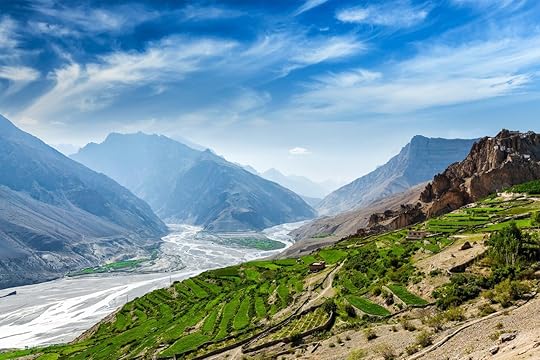
The mountainous state of Himachal Pradesh, located in the northern tip of India, is an adventurer’s paradise in every sense of the word. From rafting through the cold desert valley to flying high above the majestic Himalayan ranges to mountain biking or motorcycling on one of the world’s most dangerous roads and trekking in the Himalayas, Himachal can provide the setting.
However, traveling here isn’t always a cinch. There are treacherous stretches of road, and frequent landslides, in some parts of the state. That means every trip here needs to come with a well-planned itinerary that allows you take in all the adventures that this Indian state has to offer.
It’s home to some of the most scenic mountain treks in India.
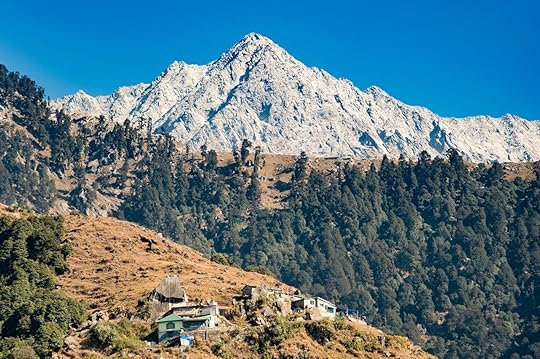
Photo: travelwild/Shutterstock
Himachal Pradesh is one of India’s popular trekking destinations, with trekking trails of varying degrees of difficulty lacing its majestic mountains and gorgeous valleys. For beginners, Triund is one of the best, and most popular, Himalayan treks. Starting from Dharamkot or McLeod Ganj, the trek traverses through lush forests of rhododendron, oak, and deodar trees. It culminates at the Triund hill top at 9,278 feet.
The stunning panorama of the Dhauladhar range and the entire Kangra Valley can be seen all along the trek. The entire route is well defined and takes about four hours on one side to complete. Do yourself a favor and stay overnight at the Triund hilltop and soak in the bright orange sunset and crisp mountain air. There are vendors at the top who will provide you with tents and other camping facilities for $7 or $8 — negotiate if quoted higher than this! Alternatively, there’s one basic rest house at the top that should be booked in advance at the Forest Department Office in Dharamshala.
Along the trail and on top, there are small tea and Maggi shops, as well as a few cafes where you can refuel. If you have a day to spare, trek to Lahesh Cave (around 11,500 feet) from Triund and further to Indrahar Pass (roughly 14,100 feet).
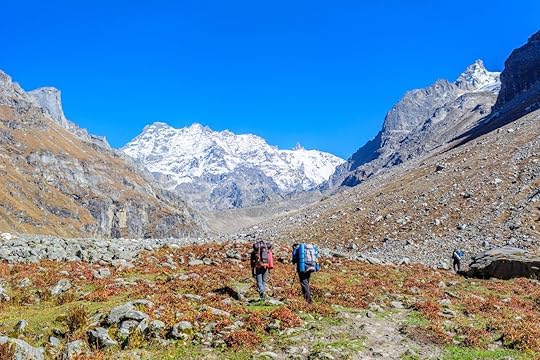
Photo: Sumit.Kumar.99/Shutterstock
If you have a couple of days more, the three-day Beas Kund trek is a perfect option. It starts from Solang Valley, just an hour’s drive from Manali, and passes through river valleys, grasslands, and dense forests with views of snow-laden mountains like Hanuman Tibba, Friendship Peak, Deo Tibba, and the Pir Panjal range. It ends at Beas Kund, which is a small alpine lake with azure waters. Accommodation can be found in homestays in villages along the way, or pitch a tent and camp at various points en route.
For a more challenging venture, go for a five-day Hampta Pass trek. It commences from Jobra, an hour’s drive from Manali, and crosses the wildflower meadows of Jwara, barren land of Balu Ka Ghera, rugged mountains of Lahaul, and verdant Shea Goru Valley. The trek culminates at Chhatru, and the highest elevation reached is 14,000 feet. For an additional challenge, trek to the crescent moon-shaped Chandratal Lake in Spiti Valley, nestled at an elevation of 14,100 feet above sea level.
If you’re looking for a more demanding trek and don’t mind the extreme cold, consider the nine- to 12-day trek to Pin Parvati Pass, perched at a dizzying altitude of 17,450 feet. It connects Pin Valley in Spiti to Parvati Valley in Kullu. The base camp is Kaza, the administrative center in the Spiti Valley, at just under 12,500 feet. You need to stay here for a day of acclimatization. The trail further climbs through terrace fields, glacial streams, boulders and moraines, grasslands, and meadows dotted with red, purple, and blue flowers. There’s a chance to spot snow leopard and ibex in Pin Valley along the way, as well as enjoy a natural hot spring at Kheerganga. The trek ends at Barshaini. But be warned: It shouldn’t be attempted by people with a low fitness level.
The ideal time for trekking in Himachal is from May to June and September to October. Numerous travel agencies and local tour companies offer trekking trips in Himachal. They take care of the navigation, guides, porters, and camping logistics. At the top of their game is Himalayan Caravan Adventure. Himalayan Frontiers and Peak Adventure are some other well-known operators.
You can take an adrenaline-inducing river rafting trip.
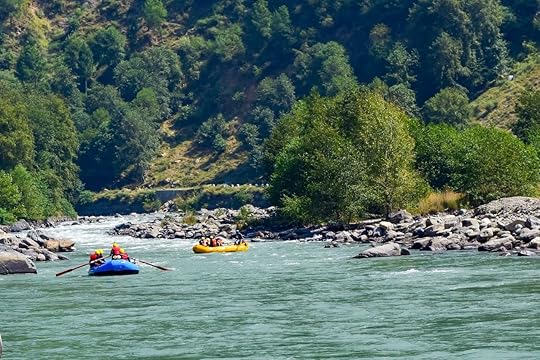
Photo: Amit kg/Shutterstock
Himachal is best known for trekking, but those in the know also consider it as one of the top places for rafting in India. The Beas River, flowing south through Kullu Valley, is one of the state’s popular white-water rivers. Grade II to IV rapids can be ridden for four to nine miles from Pirdi down to Jhiri, with stunning mountains and forest scenery along the way.
Many tour agencies and operators in Manali organize rafting trips, along with tented accommodation on the river bank. Most rafting tours last for about one and a half hour on the Beas River.
The best time for rafting is from April to mid-June and mid-September to October. Rafting is closed during the extreme winter months of December and January, and the rain-soaked monsoon months of July and August.
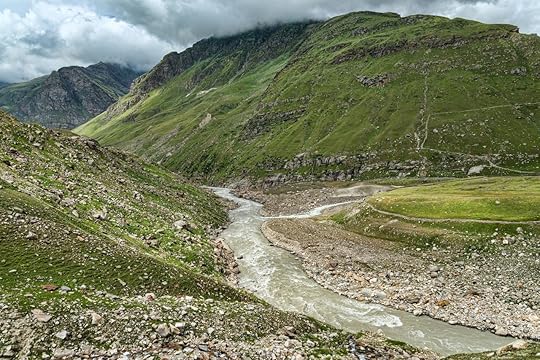
Photo: Ivan Aleshin/Shutterstock
More adventurous rafters can take a multi-day rafting trip along the Spiti River in Spiti Valley, with outfits like Ecosphere Spiti and GIO Adventures. The duration of the trip depends on the weather conditions, but most last between three and six days. It starts from the remote village of Rangrik, where the pace of rapids is gentle (class I and II). As you raft down from Sichling to Nadang, they grow in difficulty until you reach the challenge of Class IV rapids near Sumdo. The most rewarding thing about rafting in Spiti Valley is the interesting sights found along the way, from pristine villages to attractive mountain ranges, glaciers, and pastures. At nightfall, the villages serve as the campsite. Some rafting experience is required for this river, and the best time is from July to August.
It’s the paragliding capital of India.
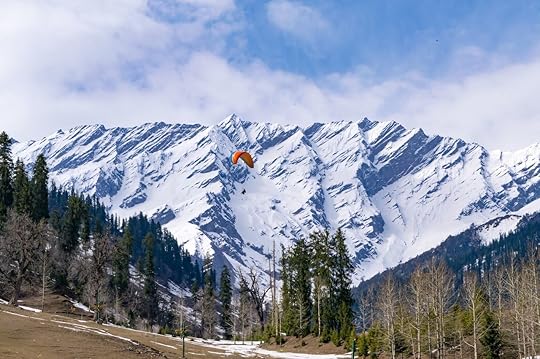
Photo: Amit kg/Shutterstock
Bir, a small town in the Joginder Nagar Valley, is the “paragliding capital of India.” It shot into fame when it hosted the first-ever Paragliding World Cup in India in October 2015. Since then, it has become a prime spot in the country for paragliders. Flyers take off from Billing, nine miles above Bir, and glide for about 15-45 minutes before landing in Bir.
The views, of the majestic Dhauladhar mountains and lush Kangra valley from up high, are breathtaking. While experts get to do a solo show, novices can do tandem rides with an experienced guide. Several professional companies can assist you with paragliding lessons and tandem flights; Billing Paragliding Association, Travel Bir Billing, and Billing Adventures of Himachal are your best bets. A session of 15-30 minutes tandem flying will cost you around $35-50, including a video by GoPro. Hostels, resorts, homestays, and camping facilities are available in the region, should you wish to stay. Optimal months are between March and May and October to November
You can set off on a motorcycle or mountain-biking expedition.

Photo: manavision/Shutterstock
Himachal Pradesh is home to some of the most spectacular mountain passes in India, which come in very handy for motorcycling and mountain-biking adventures. One of the most famous routes is the 300-mile-long Manali-Leh highway, which is open for only about four months from mid-June to mid-October. Crossing five mountain passes that range in elevation from 13,050 feet to 17,480 feet, the route is not for anyone faint of heart or lung.
The first and lowest is the Rohtang Pass, which also happens to be one of the most dangerous roads in the world. Rough weather conditions, landslides, avalanches, and miles-long traffic jams are just some of the challenges to contend with here. In case that wasn’t enough, there are plenty of hairpin curves, too. On the plus side, spectacular scenery and rest camps abound, so you can stretch out your journey to soak in as much of the natural beauty as possible.
One of the popular campgrounds in the region is in Keylong, the capital of the Lahaul district. Comfortable hotels and homestays are also available. From here, you’ll pass through a series of switchbacks, tiny villages, alpine lakes, centuries-old monasteries, and rivulets of glacial water, winding up in Pang for the night. From there, it’s 43 miles to the last and highest pass: Tanglang La. This stretch is breathtaking, crossing dramatic gorges, snow-sprinkled peaks, and the famous More Plains, a flat piece of land at an elevation of 15,748 feet. Leh is an easy ride from here.
It’s important to note that you’ll need a permit for Rohtang Pass. You can book it online. In Manali, numerous garages and bike rental shops offer bikes for rent. Make sure to check the insurance paper and pollution certificate of the gear before giving it a test run. If you’re looking for a guided trip, check out Motorcycle Expeditions, Active Adventure India, and Epic Moto Tours. All have a solid reputation.
For something shorter, but equally appealing, try mountain biking in the Kangra Valley. Stretching across 160 miles, the route starts from McLeod Ganj — home of His Holiness the 14th Dalai Lama — and passes through scenic villages before ending in Billing, India’s paragliding capital. Picturesque vistas of the mighty Dhauladhar range, lush pine forests, and Buddhist enclaves await at every twist and turn. Much of the route is at a high elevation, so be prepared. The time frame for all of these routes is from June to September.
There are some wonderful angling sites.

Photo: Sumit.Kumar.99/Shutterstock
Angling isn’t exactly what comes to mind when considering a visit to Himachal, but the state has some excellent fishing sites. Tirthan river in Tirthan Valley is the premier brown and rainbow trout location. In addition to the angling adventure itself, you’ll get to enjoy the breathtaking views of the majestic Himalayas surrounding the river, and you can camp on its shores. Another great locale for trout fishing is Baspa river in Sangla Valley.
Just note there are local rules about the catch limits and minimum size; catch-and-release policy firmly applies. Trout waters require permits from the state government, and only rod-and-line fishing is allowed. The top fishing months run from April to October.
It is heaven for ski enthusiasts.
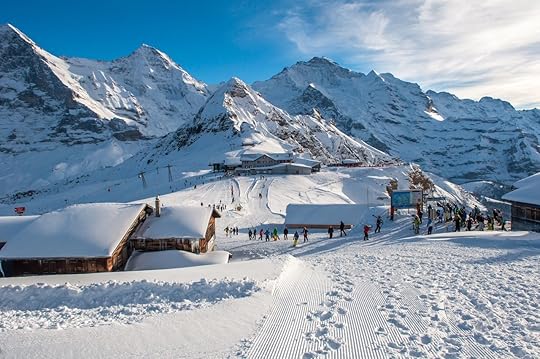
Photo: Santhosh Varghese/Shutterstock
The high elevation and mountains in Himachal make it a perfect place for a skiing getaway. One of the most popular ski resorts in the state is Solang Valley, located about 40 minutes from Manali. The enchanting valley lacks a bit in infrastructure, but the sights and accessible slopes make for an amazing winter trip. There’s one gondola, which they call a ropeway, with 19 cabins that will take you up to the runs. You can take in the views of the gorgeously snow-covered coniferous forests and mountains along the way.
The most skiable months are December through February. Ski rentals are available, as are lessons. There’s an Institute of Mountaineering and Allied Sports in Manali that caters to novice skiers and those hoping to hone their skills.
Alternatively, the Mahasu ridge above Kufri and Narkanda — located at an elevation of 8,885 feet on the Hindustan-Tibet Road — is also good for skiing. Both locations have runs suitable for both beginners and experienced skiers.
…and for heli-skiers, as well.
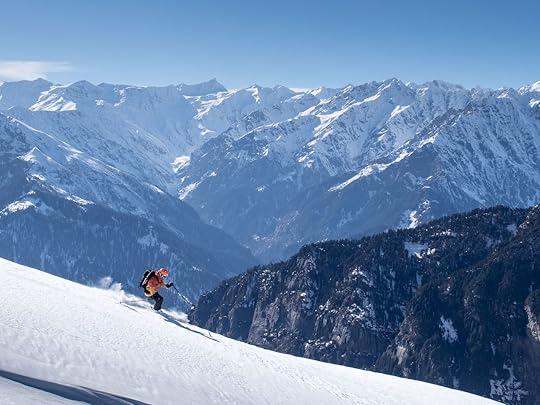
Photo: nakurage/Shutterstock
If skiing is too run of the mill, you could opt to heli-ski on the pristine powder and never-before-skied terrains of Himachal. Hanuman Tibba, the highest peak of the Dhauladhar Range, elevated at a height of 19,626 feet above sea level, offers virgin powder that serves as a perfect gliding bed for heli-skiing. A 10-minute helicopter ride will take you to the top of a 14,000-foot-high slope. You’ll get mesmerizing views from the helicopter and a pure shot of adrenaline as you make the leap and slide down the slope.
The expedition requires a bit of patience — since weather conditions are not always favorable — but you’ll definitely earn bragging rights after tackling one of the state’s highest slopes. Be warned, this thrill won’t be cheap. Check out Himalayan Heli Adventures. Plan your trip from December to February. 

More like this: 6 things to do in Nepal that aren’t trekking
The post India’s mountainous state of Himachal Pradesh is an adventure powerhouse appeared first on Matador Network.

Traditional Sicilian dishes to try

Located in the middle of the Mediterranean Sea, Sicily is a small island teeming with a diversity of food. Just kilometers away from pebble beaches and shores of fish, its mountains once grew grains for the Roman Empire. Sicily also contains the only continuously active volcano in all of Europe, Mount Etna, whose past and present eruptions have enriched Italian soil. That soil, combined with mild Mediterranean winters, allows Sicilian agriculture to boom year-round. As a result, Sicilian cuisine is known for its fresh ingredients, which are often plucked from a nearby farm or garden just days or hours before.
Sicily is situated at the tip of Italy, a midway point between Greece and North Africa. Due to its geographic position, Sicily has absorbed cultural elements from every empire that has passed through its borders hoping to seize control of trade routes on the Mediterranean Sea. Sicilian cuisine blends Greek, Roman, Arab, Norman, and Italian flavors and ingredients. Take, for instance, couscous siciliano, a typical North African dish prepared with fish on Sicily. Or the Sicilian version of the Italian favorite linguine alle vongole (linguine with clams), which usually contains local ingredients like capers grown on the volcanic Aeolian Islands or pistachios harvested on Mount Etna.
Eating your way through Sicily is one of the best ways to enjoy what the island has to offer. Here are nine traditional dishes to start with.
1. Arancini

Photo: OKMG/Shutterstock
Sicily’s most famous street food, arancini, is fried rice balls with a mix of cheese, red sauce, and meat or vegetables inside. The name comes from arancina, or “little orange,” because of arancini’s round shape and color. In Eastern Sicily, they are sometimes conical to represent the mountainous terrain. The saffron used to make arancini suggests the dish probably originated in the 10th century during Arab rule of the island.
The most common version of arancini is al ragu, which is filled with meat, tomato sauce, and peas enveloped in soft cheese and saffron-infused rice. The meat could be pork, beef, or even veal, so those with dietary restrictions should enquire before eating. Arancini al burro is another popular flavor that mixes the deliciously salty prosciutto with mozzarella inside the rice balls. Other common types of arancini include spinaci (spinach), quattro formaggi (four cheeses), and funghi (mushroom). There’s also arancini al nero di seppia, which is arancini made with squid ink that dyes the rice black.
Ask if the arancini are fatti a casa or homemade and fresh (freschi). Some fast food places (like beachside restaurants) will either make or buy frozen arancini and then reheat the balls and serve them to customers, leaving the center slightly cold. The best arancini are piping hot when split open and paired with a local nero d’avola wine.
2. Granita

Photo: giuseppelombardo/Shutterstock
While many say that dessert comes last, in Sicily, dessert is for breakfast. Granita is one of the best accompaniments to a hot sunny day laying on the beach or walking down a cobblestone street. Granita is a fruity frozen ice mixture often eaten with a spoon or by dipping a brioche and soaking it up piece by piece. Granita is also often consumed with panna (homemade whipped cream) on top. Ask if the panna is homemade before ordering to make sure you get the real deal. Some gelaterias have 20 or more flavors to offer. Traditional fruity flavors include strawberry (fragola), lemon (limone), and blackberry (gelsi). Common sweet flavors include hazelnut (nocciola), chocolate (ciocolate), and coffee (café). Beware that ordering lemon granita with panna is a mortal sin — any Sicilian will warn that the acidic lemon ruins the dairy taste.
3. Calamari ripieni

Photo: fokke baarssen/Shutterstock
“L’uomo propone, dio dispone” is a popular Italian saying that means man proposes and god decides. The gods have blessed Sicilian waters with many fish and sea creatures, one of which is squid. Calamari ripieni is oven-baked squid stuffed with breadcrumbs, garlic, eggs, parsley, parmesan, salt, and pepper. Some recipes also blend in tomato or white wine.
It goes without saying that this dish should be ordered in a seaside town, preferably the kind where a port of fishing boats is just a short passeggiata (stroll) away. The narrow body of the squid contains the fillings while the tentacles are grilled and eaten on the side with a light drizzle of oil. Squirt a little lemon on top and enjoy.
4. Sicilian pasta

Photo: Angela M. Benivegna/Shutterstock
No discussion of Italian cuisine would be complete without pasta. Nearly every meal in Sicily starts with a primo piatto of pasta. There are loads of types of pasta served, but some of the more common regional styles include:
Pasta alla palermitana: “Palermo style” pasta is a must-have when in the northwestern city of Palermo. Fish-lovers will salivate over this spaghetti served with freshly caught and breaded sardines, saffron, a hint of fennel, onions, and a dash of pine nuts.
Pasta ‘ncasciata alla messinese: From the northeastern city of Messina, this is an oven-baked macaroni dish. Tomato sauce is blended with mozzarella and provolone cheese then peppered with peas, cubes of fried eggplant, and chunks of prosciutto or salami.
Spaghetti alla siracusana: Last but not least, pasta in the southeastern city of Siracusa is made by frying vermicelli pasta in a pan with breadcrumbs before mixing in anchovies, onions, capers, diced tomato, and raisins. Possibly the oldest meal on this list, spaghetti alla siracusana has been popular since Siracusa was ruled by the Greek tyrant Dionysius in the fifth century BCE.
5. Mulincianeddi chini

Photo: Nadir Keklik/Shutterstock
Known as mulincianeddi chini in the Sicilian dialect, or melanzane ripiene in traditional Italian, this stuffed and baked eggplant dish usually prepared fresh. When ordering this dish, consider asking for an antipasto because it’s going to be a wait. The filling is a mix of egg yolk, parmesan, ricotta, and oregano. Because of its time-intensive preparation, stuffed eggplant is found primarily in rustic restaurants that take pride in slow food. Slow food is an Italian concept that became an international food movement which recognizes that cooking is an art that takes time and requires the utmost respect for the ingredients and the environment that they are grown in.
6. Pane cunzatu

Photo: simona flamigni/Shutterstock
A simple, yet filling, meal, pane cunzatu is a loaf of fresh-baked bread ripped open and seasoned with olive oil, pepper, and cheese. Pane cunzatu is often topped with olives and sun-dried tomatoes, as it was historically made by Italian peasants from leftover cooking ingredients. The seaside version of pane cunzatu tops off the oil, pepper, and cheese with acciughe salate (salted anchovies). Often sold as a takeaway dish or a rustic restaurant meal, pane cunzatu is a carb-a-holic’s dream. Eating an entire loaf of bread by oneself can be a terrifying feat, but leaving food on the plate is sinful in Italy. We recommend splitting this dish among friends.
7. Insalata siciliana

Photo: AS Food studio/Shutterstock
Almost every ingredient in insalata siciliana (Sicilian salad) can be found in nonna’s backyard. The salad is a sweet and savory combination of black olives, Sicilian blood orange wedges, thinly sliced fennel, anchovies, and red onion that’s all lightly tossed in olive oil and orange juice. Although traditionally popular as an antipasto or side dish in the winter, insalata Siciliana is best consumed when the oranges are picked fresh (anytime from November to June). The blood orange has a sweet-but-tangy flavor, accompanied by high levels of Vitamin C.
8. Sicilian wine

Photo: Georgia Carini/Shutterstock
Sicilian wine varies from region to region. For instance, the city of Marsala (famous for wine-soaked dishes, such as chicken marsala and veal marsala) in western Sicily, has a windy coastal climate that makes its wines light and airy. Marsala typically refers to a wine fortified with brandy while dry Marsala wine is used for cooking. Sweet, amber-colored Marsala is the perfect post-dinner digestivo. The most planted wine grape is catterato, which is grown both on the eastern coast and near Mount Etna. Wines made with catterato have notes of lemon and orange that make it the perfect pairing for Sicily’s many seafood dishes.
Grapes grown in Sicily absorb rich minerals from the mountainous soil. The most famous is nero d’avola, a dry and fruity red wine with high acidity that’s mostly grown in the southwestern region of Siracusa. Nero d’avola has hints of plum and blackberry and is best paired with meaty dishes like lamb or an aperitivo platter of salami made from Sicilian black pigs. Another southeastern Sicilian red is frappato, which is less acidic and lighter than nero d’avola but similarly fruity. Rather than choosing one, book a wine tour while in Sicily and try them all.
9. Cannoli

Photo: Shai Daniel/Shutterstock
Cannoli is perhaps the most popular and well-known Italian dessert. For a traditionally made cannoli, there is one golden rule: Never ever buy one that has already been filled. A fresh cannoli shell should be crisp, not moist, and filled in front of your eyes with the cream of your choice. The filling should be made with sweet ricotta, although some shops use white cream instead for a modern twist. Plain ricotta is a classic, but pistachio is another traditional variation. Chocolate and Nutella lovers will find no shortage of options while a truly postmodern cannoli lover might order cannolo scomposto, which is a broken cannoli shell served over a dish of ricotta or cream with chocolate sauce and (optionally) chopped hazelnuts. Buon appetito. 

More like this: Catania in Sicily is a blend of three distinct cultures, and it’s beautiful
The post 9 traditional Sicilian dishes everyone who loves Italian food should know appeared first on Matador Network.

Proximity Nomad coworking spaces

For remote workers, coworking spaces have long offered a respite from moments of panic when you need quick access to a printer, a quiet area for a conference call, or even just somewhere to work from when successive days secluded inside the home start to peck away at sanity. But, with varying and often high costs for single-day passes, they’ve never been the most reliable option for traveling. Enter Proximity Nomad, a new membership program from coworking software company Proximity Space. The program gives travelers access to an increasing collective of coworking spaces around North America and, increasingly, overseas.
Proximity Nomad gives travelers the ability to find coworking spaces where they are going that they already have access to with a flat monthly rate. For a cross-country national parks road trip, for example, you could start in Yosemite and then work in Mammoth Lakes, then head to Flagstaff, Arizona, and work while picking up supplies for the Grand Canyon. Or stop in Peoria, Illinois, or Chicago en route to Indiana Dunes National Park. “What makes this appealing is that many of our spaces are in rural communities and smaller cities, not just big cities,” said Leah Carlson, Senior Marketing Manager at Proximity Space. “Our network goes beyond metropolitan areas, allowing for more robust work and travel options.”
Nomad also offers international coworking access for travelers, with member locations currently in 191 cities. The bulk of these are in the United States, though you can also hop over the border into Canada, Australia, New Zealand, or Germany. The network is expanding on a near-monthly basis, with the current focus on North America. Through a monthly membership, you have credits that can be used as day passes across the entire network. Basic membership starts at $69 per month for those needing just limited working days and runs up to $449 for near-unlimited access. “Coworking spaces are strategically designed to maximize productivity,” Carlson said. “Conference rooms, fast WiFi, phone booths, and creative decor are all a part of the package. The free coffee is just a perk.” Check out Nomad’s map of members to see if there is a space located where you’re headed. 

More like this: The best banks for international travelers
The post This service gives travelers access to coworking spaces around the world appeared first on Matador Network.

Instagrammers destroy Siberian field

Another day, another place of natural beauty being ruined by Instagrammers. This time, it’s a flower field in Siniy Utes near the city of Tomsk in Siberia, Russia. Hundreds of bloggers and Instagrammers frequent the place on a regular basis, and though the flower field is an undoubtedly beautiful backdrop, the foot traffic is actually destroying the place.
View this post on InstagramA post shared by татьяна (@misstatyana0367) on Jul 28, 2019 at 9:42am PDT
The field, however, belongs to the Siberian research institute of agriculture and turf, and it’s full of beautiful purple plants (known as phacelia tanacetifolia) used for research. Biologists are asking people to stop coming in such massive numbers, as they are destroying the plants and flowers and interfering with research efforts.
View this post on InstagramA post shared by Мирошникова Евгения (@miroshnikova_evg) on Aug 2, 2019 at 10:23am PDT
According to some Instagram users, there are ribbons fencing the meadow and signs clearly expressing that it is forbidden to go in and trample the flowers, but that hasn’t stopped those in desperate search for likes to pose in the “Siberian Provence.”
View this post on InstagramA post shared by Anastasiya Degtyareva (@a.a.degtyreva) on Aug 4, 2019 at 4:23am PDT
Anastasiya Degtyareva, responsible for the shot above, expresses her frustration in the caption, “The rebellious soul of a Russian person will not tolerate any restrictions. There are signs and ribbons, people have been asked on social networks and online to not go in this field, but they even get there by taxi, and besides, there are a lot of empty bottles. Not only do they trample the meadow, they also litter.”
We prefered when Russian instagrammers swam in “Siberia’s Maldives,” AKA a dump for nearby coal plant waste — it was a lot funnier. 

More like this: The 11 most stunning flower fields in the US
The post Scientists ask tourists to stop taking pictures in Siberian flower field, but Instagrammers know no bounds appeared first on Matador Network.

Vacation With An Artist profile

Between work, family, friends, and life in general, it’s hard to make time for your own self, let alone time to learn a new skill. If you’ve been wanting to embrace your inner creativity or diversify your skillset but can’t find the time in your daily life, then consider turning your next vacation into a unique apprenticeship with Vacation With An Artist (VAWAA). While taking classes in your home city can lend to a great experience, nothing compares to actually going to the places where the art forms originate and are most prevalent, and learning from the masters themselves.
How it works
VAWAA offers travelers the opportunity to, as the name suggests, vacation with an artist. It has partnered with 67 artists across 23 countries and five continents (Australia is coming soon!), so there’s something for everyone.
To start, you’ll need to browse the list of offerings and choose what appeals to you the most. All trips but one occur over multiple days, and you could end up on a trip that lasts anywhere from two days to a full week. Every artist has their availability listed, and from that, you can select the dates that work for you and send a booking request to the artist that they then can approve. It’s similar to booking an Airbnb; the host has to approve your date selection and, essentially, you.
It’s important to note that language is often not an issue, so travelers don’t need to worry; in addition to their native language, many of the artists speak English or a second language. Translation apps can come in handy if something does come up, but it’ll be easy to learn without words.
Once you’ve selected your dates, you’ll be directed to a booking request form where you’ll fill out information like your name, the number of guests, email, country of residence, and the like, as well a short blurb as to what about your chosen artist and trip piqued your interest. Additionally, if you’d like to spend more time with the artist, you can add a note saying as such in your booking request and one of VAWAA’s guest coordinators will assist to see if it’s possible.
From there, you’ll be contacted by one of the guest coordinators who will be the intermediary between you and the artist pre-arrival and finalize the details. Once everything has been confirmed, you’ll need to pay the full cost of your trip.
Pricing and what’s included

Photo: VAWAA/Facebook
Prices vary depending on a number of factors: what trip you’ve chosen, the duration, and if there are any additional guests. Each artist has set a maximum amount of extra guests, which ranges between two and five, and the fee for each extra person is less than that of the first original guest; a few trips, like porcelain ceramics in Paris, France, don’t charge for extra people, but that generally is not the case. All in all, trips can be anywhere between $169 for a day of salt soap making in Ljubljana, Slovenia, and $3,325 for five days of bespoke shoemaking in Prague, Czech Republic.
For all VAWAA trips, the price includes the artist’s fee for their time, the lessons, exclusive access to their studio space, use of their tools and supplies, the artwork you take back home, and a VAWAA fee that’s used to keep the program going. You won’t be with the artist 24/7, so you’ll need to pay for anything you do in your free time.
Not included is airfare, food, and accommodation, which means it’s up to you to figure out those extra arrangements — though VAWAA coordinators can provide suggestions if you need the help. A few trips do include accommodation within the price of the overall trip, such as natural dyeing and indigenous weaving in Oaxaca, Mexico. Some have accommodation listed but you have to pay a fee for the first guest and then any other guests after that are free, such as writing with an award-winning author in Hanoi, Vietnam, and cooking historic cuisine in southern Italy. And then there are the trips that have accommodation listed, but you’ll have to pay for every guest, like karakami printmaking in Shiga, Japan; Dhokra metal art in Panchgani, India; and photography in Lyngør, Norway.
Why you should go on a VAWAA

Photo: VAWAA/Facebook
“I’ve always loved the idea of slow travel, immersing into a new place, and learning something new. After all the world is full of wisdom and different perspectives, perfect to inspire and feed my curiosity,” said Geetika Agrawal, VAWAA’s founder, to Matador Network on the impetus behind the company’s creation. “Over the years, as life got hyper-digital and fast-paced, I craved such experiences even more. I wanted to disconnect, slow down, and stir my creativity, and it was hard to find such experiences. Hence, VAWAA was born.”
There are no requirements to go on a VAWAA. Agrawal went on to say that people should go on one of these trips if they’re curious and lifelong learners, feeling overworked, in need of a digital detox, going through a transitional phase in life and seeking inspiration, are an artist looking to develop their skill set, or want to share a meaningful experience.
You don’t need to be a master of the arts to participate in one of the trips — you don’t even need to be an artist at all. You can have zero experience and still enjoy an amazing time on the trip. All you need is an open mind, an eagerness to learn, and a willingness to slow down.
Not just your average class

Photo: VAWAA/Facebook
VAWAA trips offer an opportunity for travelers to try something truly unique. They can provide the space needed to take a moment’s breath and really focus on the here and now — something that has become increasingly hard to do nowadays.
The trips cover a wide breadth of art forms, and the most difficult choice you’re going to have to make is which one to pick.

Photo: Andrew Angelov/Shutterstock
One of the more unique experiences that you’ll definitely be able to brag about back home is learning the art of Ebru painting in Istanbul, Turkey. Otherwise known as Turkish marbling due to the swirled shapes in the final product, this art dates back to the 16th century. With Ebru painting, people don’t use solid canvases and instead paint on water; different dyes are added to a surface that contains water, the shape is manipulated by pointed tools (like an awl), and then in a method similar to printmaking, a paper is placed over the art so that it can transfer over. You’ll learn all of this and more from Silvia, your artist guide for five days. She has studied Ottoman culture, Islam, Sufism, and the cultural significance of water in Istanbul for almost 25 years, which led her to Ebru painting.
With Silvia, not only will you be instructed on the entire process of Ebru painting and producing your own work, but you’ll also receive a cool history lesson that provides some context, visit a local calligraphy studio, and go on a tour of the city’s local waterways.
Even cooking classes have a different spin with VAWAA and go beyond the typical ones you might find on your own. A cooking class with Nazlina in Penang, Malaysia, for example, won’t have the ingredients ready for you upon arrival. Over the course of four days, you’ll be taken to see the ingredients you’ll use in the natural habitats in which they grow, go on a tour of a local market, pick out the ingredients with Nazlina, and then cook recipes that are both traditional and healthy. Nazlina believes in the slow food movement, and the recipes she follows have been passed down through her family.
Agrawal hopes that after their trips, people “feel more in sync with themselves, develop new perspectives and skills, have a better appreciation for a craft, culture, and place, and make meaningful connections with people.” 

More like this: The 11 most beautiful glass ceilings around the world
The post This company lets you vacation with an artist to learn a traditional craft appeared first on Matador Network.

Best honeymoon destinations for LGBT

Picking the perfect spot for a perfect honeymoon is difficult, regardless of your sexual orientation — but there’s an additional set of challenges to consider if you’re LGBTQ. For same-sex couples, local laws and tolerance are just as important as the destination itself. This is your honeymoon after all, and you’ll want to pick a place where you can enjoy a stroll along the beach hand-in-hand without worry. The good news is, marriage equality and anti-discrimination laws are on the rise, which means the world is becoming an even more welcoming place. So, whether you’re planning an intimate rural retreat or prefer to celebrate under swaying palm trees, here are 10 heavenly destinations to inspire you.
1. Hebden Bridge, England

Photo: peter jeffreys/Shutterstock
If romance for you means plenty of alone time together, then turn your attention to the Yorkshire moors. Dotted with old mill chimneys that stand testament to its industrial past, Hebden Bridge is now a town of bohemian cafes, stone cottages, and leafy canals. Dubbed the “lesbian capital of the UK,” Hebden Bridge is rumored to have more lesbian women per square foot than London or Brighton. The mill town prides itself on welcoming people of all orientations, so you can hold hands together wherever you want — no one will bat an eyelid. And if you fancy a change of pace after a week of rural walks and English country pubs, just hop on a train for an evening in nearby Manchester, as its LGBTQ nightlife is legendary.
2. Tahiti, French Polynesia
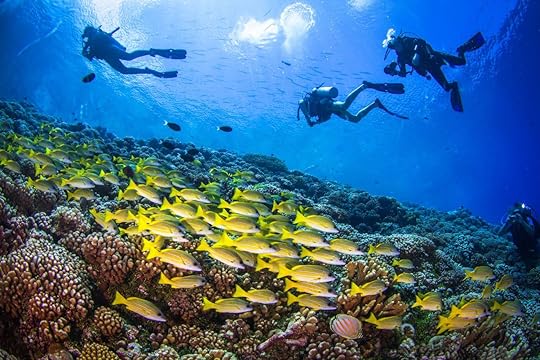
Photo: Kristina Vackova/Shutterstock
For a truly luxe gay-friendly getaway, head to Tahiti. For beach-loving newlyweds, and it’s easy to see why it’s so popular. A typical day here includes snorkeling with stingrays and a Polynesian picnic on white sand, followed by sunset cocktails. In terms of the local attitude toward all things LGBTQ, French Polynesia is among the most progressive in Oceania — same-sex marriage is legal, and Tahiti has long had a cultural acceptance of transsexuality. In fact, it’s an ancient custom for families here to raise their first male born as a female, a rae-rae, who embodies both the “masculine” and “feminine.” Males can choose to live their lives as a rae-rae with no discrimination.
3. Reykjavik, Iceland

Photo: Anastasiia Skorobogatova/Shutterstock
Iceland wasn’t only one of the first countries in the world to legalize same-sex marriage — it has among the highest number of citizens in favor of it (89 percent) and the only openly gay head of state in the world. So rest assured, you’ll feel welcome here. While famous for its blue lagoon and whale watching opportunities, there’s plenty for newlyweds whose taste is for the geographically jaw-dropping. Start your trip in a Nordic boutique hotel in the country’s capital before hiring a car and exploring the nearby Reykjadalur Valley. In the summer, Icelandic horse riding is a must and if you’re there during winter, there are plenty of outdoor winter sports.
4. Cape Cod, United States
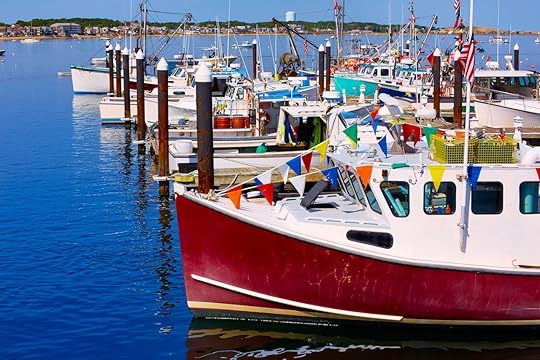
Photo: lunamarina/Shutterstock
It’s not much of a secret that Cape Cod is one of the top gay travel destinations in the US. Its drag shows, elegant restaurants, and big annual parties have been drawing LGBTQ travelers for years. Situated at the very top of Cape Cod, Provincetown (affectionately referred to as Ptown) is the go-to spot for same-sex honeymooners. It has direct access to the region’s best beaches and plenty of gay-friendly guest houses to choose from, including the Crown Point Historic Inn and Spa, which offers exclusive honeymoon packages.
5. Cape Town, South Africa
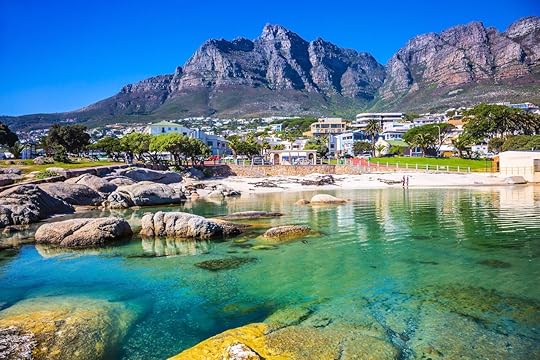
Photo: kavram/Shutterstock
With miles of beaches, a dramatic mountain backdrop, and an openly gay population (same-sex marriage is legal in South Africa), Cape Town is a very accepting place on the African continent. In fact, it’s often referred to as “the second San Francisco.” While there, there’s Table Mountain to explore, as well as vineyards, safari tours, eclectic nightclubs, and a handful of LGBTQ-friendly beaches (Clifton 3rd Beach and Camps Bay are the best in town). There’s an array of friendly accommodation in De Waterkant, home to Cape Town’s LGBTQ quarter. Be sure to check out Manhattan — it’s the city’s oldest gay bar.
6. Taipei, Taiwan
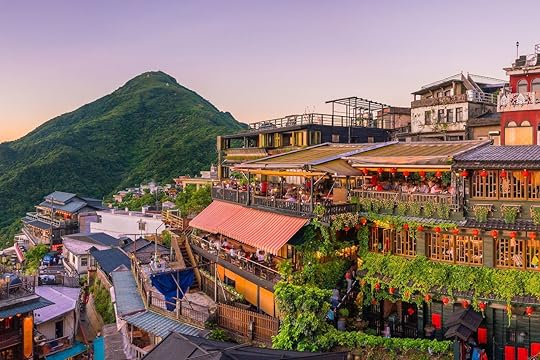
Photo: f11photo/Shutterstock
Taiwan made headlines earlier this year when it became the first Asian country to legalize same-sex marriage in May. It remains a rarified haven for LGBTQ travelers in the Far East, with the continent’s largest pride event, a Mr Gay Taiwan pageant, and even a god devoted to homosexual love. The five-star Mandarin Oriental Taipei is a great starting point for exploring the city. From there, visit Longshan Temple and Da’an Forest Park, then re-energize with some freshly cooked street food before heading out to one of the city’s gay clubs — most of which are based around the city’s Ximen Red House complex. For a more low-key experience, the coastline has plenty of surprisingly affordable luxury beach resorts to choose from.
7. Auckland, New Zealand
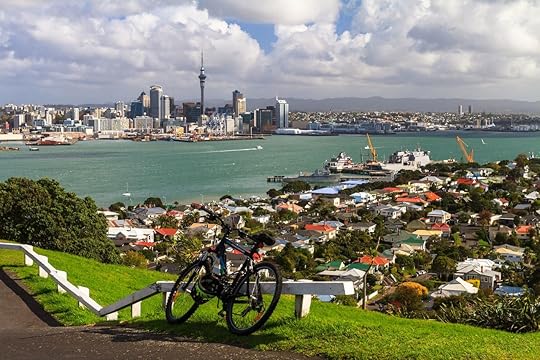
Photo: DmitrySerbin/Shutterstock
Snow-topped mountains and white sandy beaches sit alongside a small but vibrant gay nightlife in New Zealand, home to one of the most LGBTQ-friendly cities in the world — Auckland. Base yourself here, which hosts the majority of the country’s gay bars and clubs, not to mention plenty of world-class wineries and beaches. Accommodation here is as wildly varying as the landscape itself: Choose from friendly homestays to boutique hotels to luxury lodges.
8. Toronto and Montreal, Canada

Photo: ProDesign studio/Shutterstock
Picking a honeymoon destination is a subjective job, but the Latin America Travel Company decided to rise to the challenge and compiled a list of the . It based its findings on marriage equality, LGBT travel recognition, romantic settings, how popular the country is for honeymoons, how “loved up” the general population feels, and how progressive the people are. And guess which country topped the list? Toronto and Montreal, in Canada, are two of the most welcoming LGBTQ honeymoon spots in the world, and easily doable on a single trip. Split your time equally between the two cities and take day trips to the nearby Montmorency Falls and Îles-de-Boucherville National Park.
9. Montevideo, Uruguay

Photo: Birdiegal/Shutterstock
When Uruguay approved same-sex marriage in 2010, it further solidified itself as a go-to destination for adventure-loving LGBTQ couples looking for off-the-beaten-track experiences. The country’s cosmopolitan capital makes a great starting point for exploring the nearby sites. Book a room in the gay-owned Casa Sarandi guest house and visit the historic old town and nearby Pocitos Beach before hopping in the car for a road trip up the Atlantic Coast. For something quieter away from the capital, spend a night or two at Colonia del Sacramento, a lovely fishing village that’s a two-hour drive away by car. Or if you’re looking for something more luxurious, book one of Playa Vik‘s sleek beachside villas.
10. Mykonos, Greece
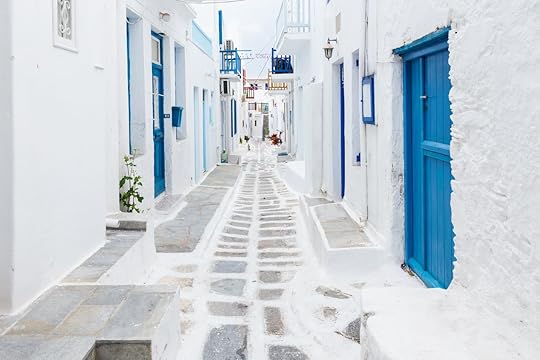
Photo: ZGPhotography/Shutterstock
To explore some of Europe’s best beaches and then spend the night partying hard Ibiza-style, Mykonos is your spot. Not only is the island easily accessible from Athens (it’s a three-to-five hour ferry ride), it also has one of the country’s biggest LGBTQ scenes, with a plethora of gay-friendly beaches to relax on during the day and pumping clubs to explore once the sun goes down. Super Paradise is a golden stretch of sand popular with heterosexual and gay sunbathers alike, and the glamorous Elia Beach on the south coast has its own gay nude section. While activists in Greece are still fighting for same-sex marriage, it remains one of the most LGBTQ-friendly destinations in Europe. 

More like this: 15 of the best destinations for LGBTQ weddings
The post 10 of the best honeymoon destinations for gay newlyweds appeared first on Matador Network.

Google Earth indigenous language

To showcase the linguistic diversity of the world we live in, Google Earth has launched a new feature that will keep language learners and world travelers happy for hours. A new interactive platform on its Voyager feature allows users to listen to audio recordings of 55 Indigenous languages, as voiced by a native speaker, around the world. The project, called Celebrating Indigenous Languages, also provides information on activists pioneering new ways to preserve native languages.
To use it, all you have to do is click on a placemark and you’ll hear someone speaking the Indigenous language and a translation of what they’re saying will be typed out. Speakers were recorded giving greetings and responding to questions like “What is your favorite proverb in your language?” and “Can you share a traditional song in your language?”
In Rapa Nui te reo, the traditional language of Rapa Nui, also known as Easter Island, we learn that “Hello” is said “Iorana” and that in the Northern Sámi language of Arctic Europe, there’s a famous idiom that says, “Moving around is a better way of life than just being still.” From Quechua in Peru to Cherokee in Oklahoma to Kuvi in northwestern India, you can learn a lot about the communities featured by just listening to a few sentences in their traditional tongues.
Out of the 7,000 languages spoken in the world, 2,680 Indigenous languages are at risk of disappearing, UNESCO explained. Furthermore, the United Nations has declared 2019 the “Year of Indigenous Languages.” 

More like this: The 7 coolest ways to experience First Nations culture in British Columbia
The post Listen and discover Indigenous languages on Google Earth’s new platform appeared first on Matador Network.

Trump wants to buy Greenland
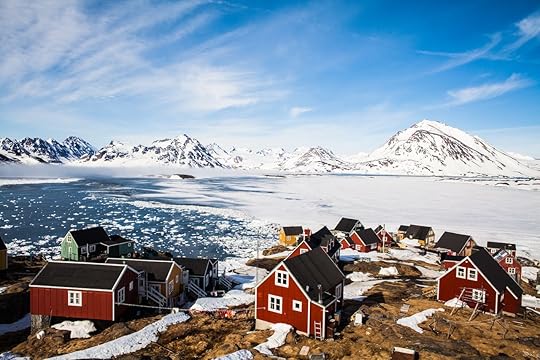
Nothing surprises us any longer. Of course President Trump wants to buy Greenland, despite the fact that Greenland is an autonomous territory of nearly 60,000 people and is not for sale.
According to the Wall Street Journal, Trump is reported to have seriously discussed the idea with advisors, due to the world’s largest island’s abundance of natural resources, and its strategic military position.
Greenland’s government, however, has responded, “We’re open for business, not for sale,” and Denmark, whose realm Greenland is under, dismissed the idea as an out-of-season April Fool’s joke.
#Greenland is rich in valuable resources such as minerals, the purest water and ice, fish stocks, seafood, renewable energy and is a new frontier for adventure tourism. We’re open for business, not for sale❄️
Best airports for dogs in the US

Flying with a pet is extremely stressful for both animal and owner alike, and requires you to constantly be aware of the many airport rules regarding your four-legged friends. Thankfully, many airports around the US are aware of this issue, and are doing what they can to alleviate your stress. Travel rewards website Upgraded Points compiled a list of the best airports for dogs, ranking facilities on amenities like expansive areas for pets to relieve themselves and get in a game of fetch, as well as on-site boarding or daycare facilities. Whether it’s a designated lounge area where you can relax with your pet before your flight, or a full-fledged on-site dog park, these are the best airports in the US for pet owners.
1. John F. Kennedy International Airport

Photo: JetBlue/Facebook
Ranked the best airport for pets in the US, JFK’s terminals certainly make things easy for pet owners. Every terminal in the airport comes equipped with relief areas (some outdoors, others indoors). Most impressive of all, Terminal 5 has a 4,000-square-foot outdoor patio called “the Wooftop,” where you can relax with your pet post-security before boarding. It’s open daily from 6:00 AM to 11:00 PM. Note that the ARK at JFK, located off the runway in Cargo Area D, provides 24/7 pre- and post-travel animal care and veterinary services for pets, horses, birds, livestock, and exotic animals.
2. Hartsfield-Jackson Atlanta International Airport

Photo: Hartsfield-Jackson Atlanta International Airport/Facebook
This airport’s high ranking is owed to its 1,000-square-foot dog park located before security, where your dog can run around in a fenced-in area. Once you’re through security, there are also relief areas in every concourse (near Gates T7, A10, B33, C19, E14, and F7, as well as D-Midpoint), so you won’t run into any bathroom emergencies just prior to boarding. And if you need to leave your pooch behind while you travel, Pet Paradise offers a 24/7 pickup and drop-off service by appointment, where your pet will be well cared-for throughout the entirety of your trip.
3. Sky Harbor International Airport

Photo: Phoenix Sky Harbor International Airport/Facebook
This Phoenix airport has a lot of space for your pets to run free and escape the stressful, restrictive airport environment. Rather than just a single dog park, Sky Harbor International Airport has nine separate areas for pets to run around, have a drink, and do their business, three of which are located post-security. The Paw Pad in Terminal 3 — Level 1 provides an outdoor area featuring native Arizona plants and a pet relief area, and the Bone Yard in Terminal 4 — Level 1 has a bone-shaped green space.
4. Los Angeles International Airport

Photo: LAX/Facebook
LAX might be famous for being super busy and for how frustrating it is to get an Uber, but maybe it should be known for having more pet relief areas than any other airport in the US. There are three animal relief areas before security and eight more post-security. Note that two of these are areas that are both indoors and outdoors so your pooch can take a breath of fresh air. The total of 11 pet relief stations makes a stressful trip through LAX a little more manageable for pet owners.
5. Minneapolis-Saint Paul International Airport

Photo: Now Boarding/Facebook
Minneapolis-Saint Paul International Airport maintains a high standard for pet service and convenience, with indoor and outdoor animal relief areas in Terminal 1 and 2. The indoor designated spaces feature realistic elements like fire hydrants, faux grass, and woodchips. The outdoor area in Terminal 2 is grassy. In addition, Now Boarding, an affiliate of the Animal Humane Society located on airport property, allows you to drop off your pet for boarding, day care, spa treatments, and training. After you’ve left your four-legged friend, you can even leave your car at the facility, and take a complimentary shuttle to your terminal to catch your flight. When you return, you’ll get picked up from the terminal and returned to your pet and vehicle.
6. Austin-Bergstrom International Airport

Photo: Bark&Zoom/Facebook
What really sets Austin’s airport apart from the rest is its famed “Dog Walk” area pre-security, which features a dog drinking fountain, dog waste pick-up bags, and trash bins. The airport also offers the Bark & Zoom service — a 24-hour pet pickup and drop-off facility that takes care of your pet while you’re on vacation.
7. Reno-Tahoe International Airport

Photo: Paws 4 Passengers/Facebook
The award for best on-site dog park goes to Reno-Tahoe International Airport, which has three large parks complete with space to run and play, and a covered area for when the weather isn’t favorable. The parks are equipped with a fire hydrant, running water, and mutt mitts to clean up after the dogs. There are two Bark Parks pre-security and a relief area post-security. The airport also has a Paws 4 Passengers program with therapy dog teams throughout the terminal to help passengers relax before their flight.
8. Dallas Love Field Airport

Photo: Dallas Love Field/Facebook
There are three pet relief areas at Dallas Love Field Airport; two outdoors and one indoors. Located at the end of the baggage claim area on the upper level, the Pet Park is the biggest of the three and has enough space for dogs to run and even get in a game of fetch before a flight.
9. Denver International Airport
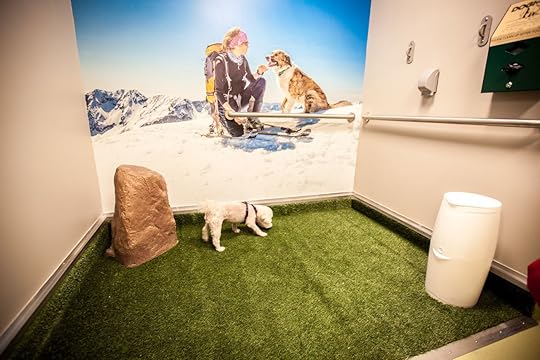
Photo: Denver International Airport
Denver brings a taste of the famous Colorado outdoors to its pet relief areas with large mountain-themed murals, faux grass, and even boulders. There are indoor relief stations in each concourse post-security and one outside of Jeppesen Terminal pre-security. But the real highlight, and what earned DIA its spot in the top 10, is its luxurious pet-boarding facility called Paradise 4 Paws. If your dog fancies a swim in a bone-shaped bath or needs a bit of personal attention (think obedience training, medical care, grooming, or massages), the 25,000-square-foot on-site pet resort is the place to hit for a day or overnight stay.
10. Dallas/Fort Worth International Airport

Photo: DFW Airport/Facebook
Dallas certainly isn’t slacking when it comes to providing pet amenities in its airports. The second Dallas entry on this list, this airport has a Paradise 4 Paws just like Denver’s, for whenever you need extended, around-the-clock care for your pet. There are also four designated pet relief areas beyond the security checkpoint, as well as four other areas for pet relief outside the entry doors on the lower level, pre-security. 
This article was updated on August 16, 2019.

More like this: Everything you need to know about your rights for flying with pets
The post The 10 most dog-friendly airports in the US appeared first on Matador Network.

Matador Network's Blog
- Matador Network's profile
- 6 followers



